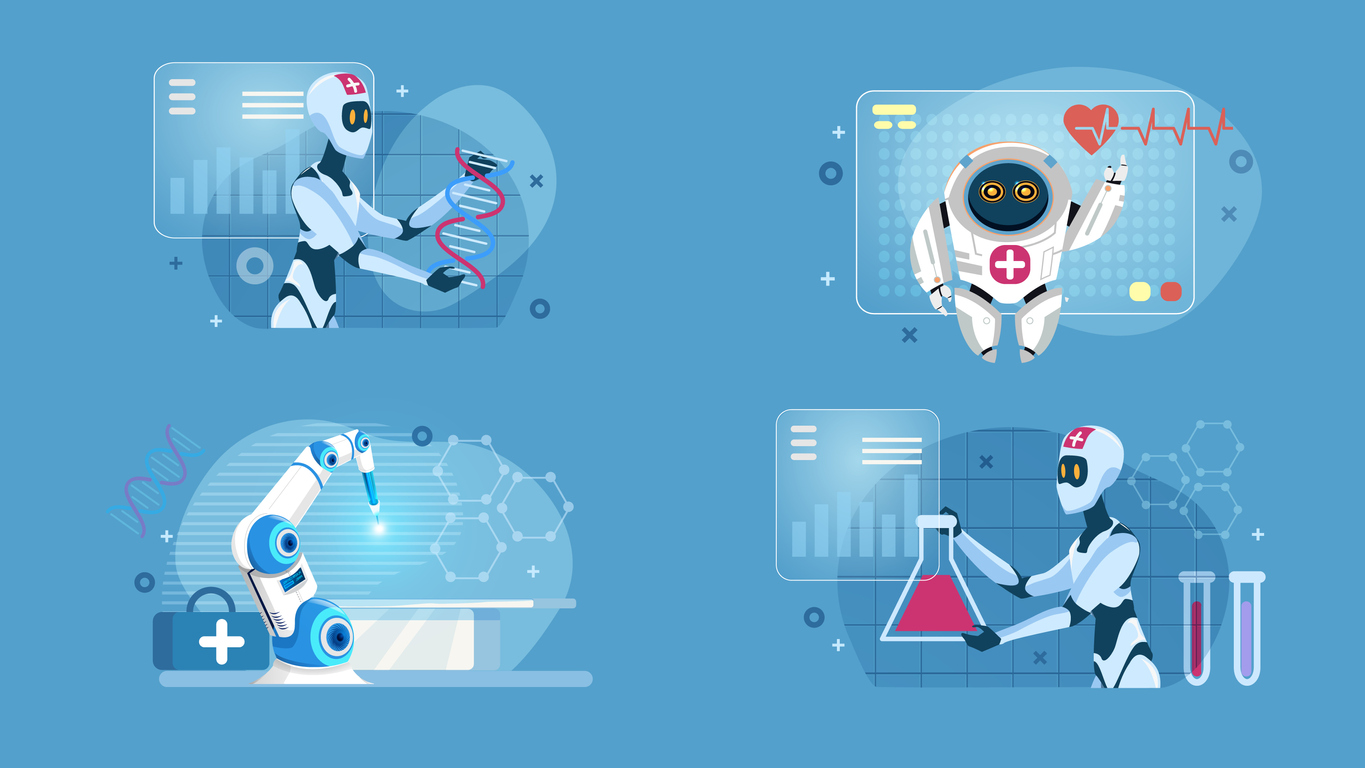The company Veebot produced a robot that can draw blood for samples faster and more efficiently than a human can, even in difficult cases. The tests proved that the robot can find the most accessible vein with 83% accuracy, a similar percentage to a human phlebotomist, and that the process of drawing blood can now take close to a minute only!
Veebot created a video that became extremely popular as they showed how a familiar process, that all people dislike, could potentially become robotised. Eventually, everyone wanted the quick results but without the robot itself.
Robots in hospitals
The pandemic has proven beneficial for robots as they have been used in many fields, with disinfectant robots, robots doing health checks in schools, surgical robots and robots supporting telehealth appearing in the last few months. The list is never-ending and the aim is to aleviate the burden from humans and offer them support.
Robots got the boost that they needed as they were used to stop the spread of the novel virus in hospitals and help to prevent hospital-acquired infections. Finally giving them the opportunity to change category from being ‘cool but useless’ to actually helpful for hospital workers and other cases, such as taking blood samples.
Although the concept of using such sci-fiesque technologies is still in its infancy, it is not as far-fetched as one might initially think, as they present the opportunity for other obscure technologies to be better understood and utilized in the future.
Are you afraid of drawing blood?
Blood draws is the only mean available to draw an adequate amount of blood from patients, making it one of the most common procedures. Although it is so common, it is also quite tricky for nurses and medical professionals too, as doctors have mentioned being as terrified as the patient when the time came to draw blood from them. Finding a way to aleviate this negative experience for patients and doctors alike would be great.
It is not surprising of course that drawing blood is such a dreaded procedure as so many people have fears about it. Fears so big that they have official names, such as trypanophobia, Bll, haemophobia and others. On the healthcare professionals side it is also a struggle many times to even find a suitable vein, as in cases of obesity, dehydration and certain severe chronic conditions, or even if someone has small or inelastic veins. There is a 73% success rate, when it comes to these cases, for professionals to find veins using their needle.
Devices such as vein scanners that can help detect suitable veins and others do exist that can aid the process, but they are extremely expensive and not always helpful, unlike robots!
Why is the thought of a robot touching us irritating?
There is an underlying sort of fear us humans have towards robots, and the more human-like they seem, the more we seem to resent them. Even if robots have proven to do a better job than humans, us humans dont want them to surpass our abilities, but this is something that we must overcome. There needs to be another cultural shift in perspective in order for digital healthcare to expand.
Early in 2020, another blood draw solution by robots came out with even higher success rates in its clinical trial. Rutgers University’s research team created an automated blood drawing robot which outperformed human professionals in the same task, in some cases, and also included a blood analyser. The team’s research showed how the robot can free up more of healthcare professionals’ time in order to utilise it by treating patients, instead of jabbing them with needles.
Is automatisation the ultimate solution?
By making processes automated, problems can be solved. A robot can actually see where a vein is instead of just assuming, freeing up valuable nurse time and most importantly, a robot’s hands never shake, and it will not get exhausted or overworked.
The use of robots would not replace nurses as they will always be needed to support the patient and of course, provide empathy, but they would not need to focus on the difficult execution of blood drawing, providing an extra level of safety to the patient.
We trust MRI scans, so why do we not trust robots?
Trust is the major issue when it comes to using robots, which does not truly make sense as patients already interact with a plethora of technologies in medicine; technologies which they do not entirely understand. A patient will lie still for MRI scans, and allow CT tests and X-rays and all other kinds of valuable technology used in the hospital setting.

